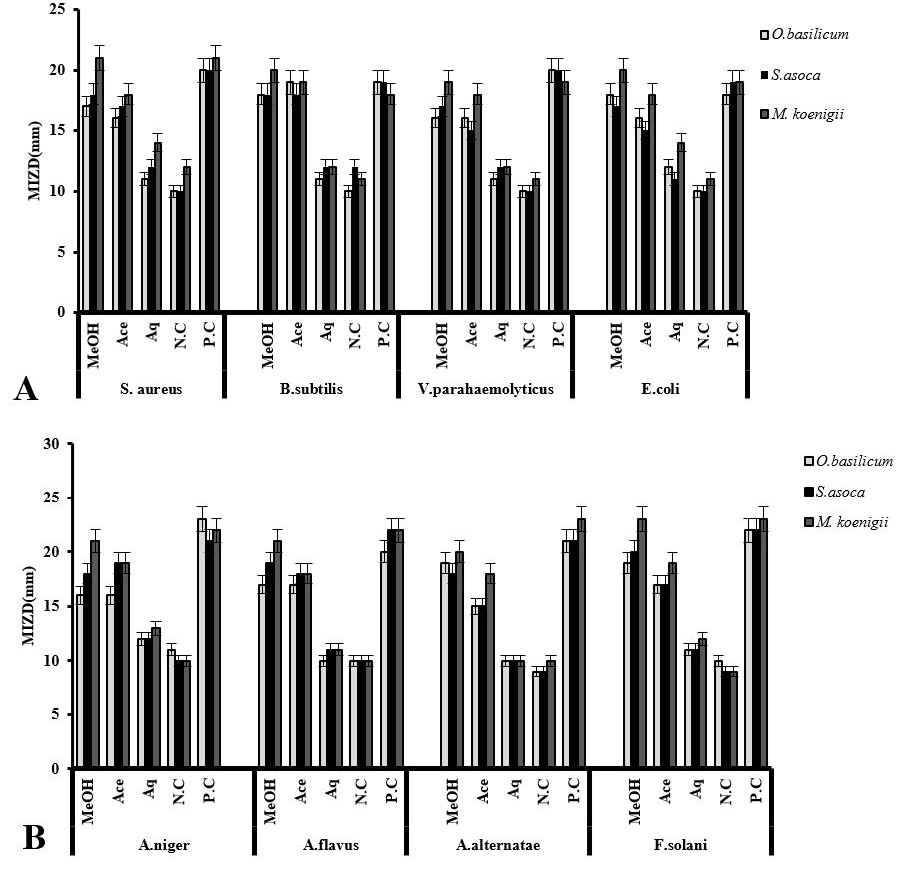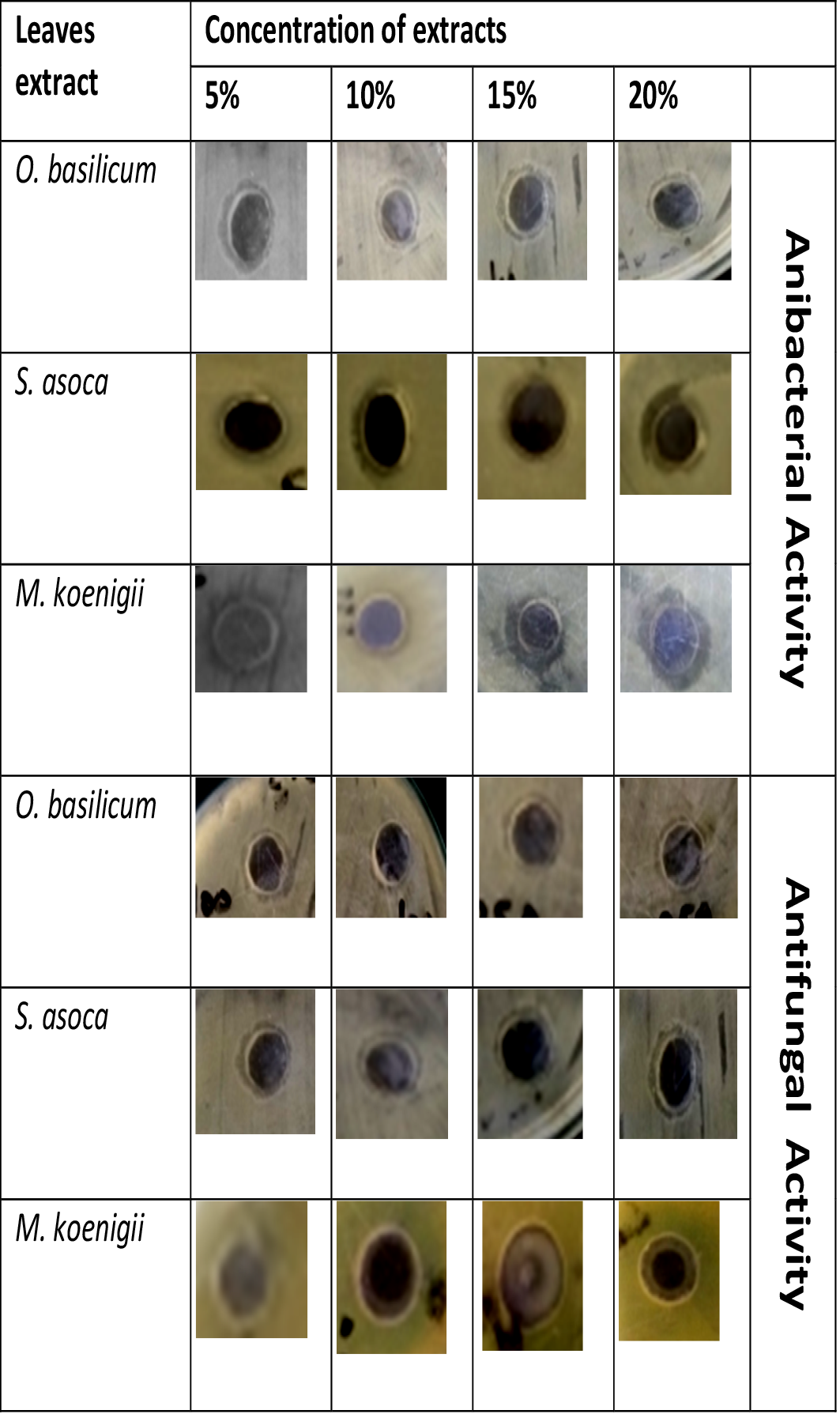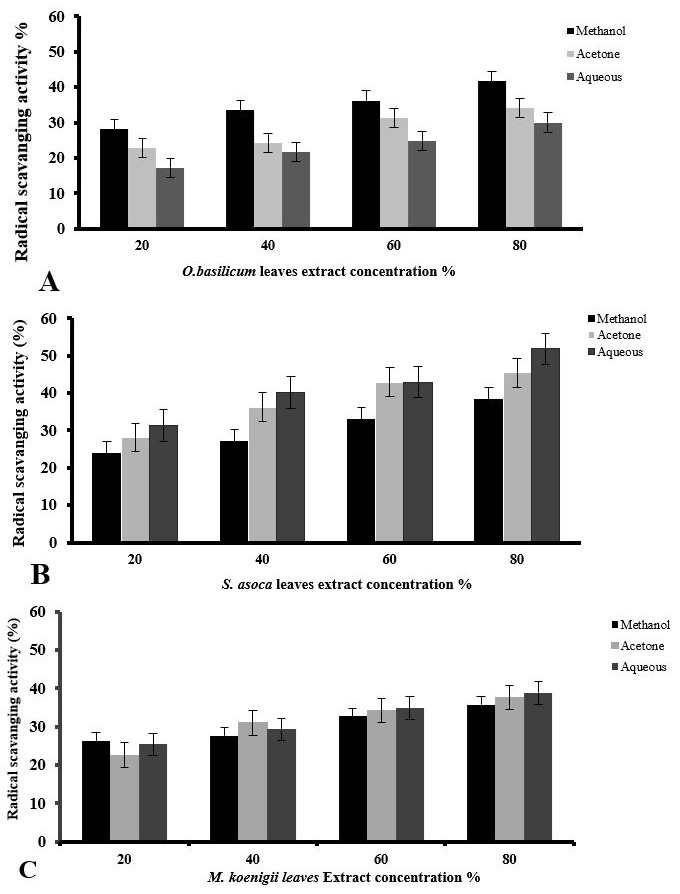Bioactive Potential of Leaf Extracts (Tulsi, Curry and Ashoka) Through Total Phenolic Content, Antioxidant, Antimicrobial and Antifungal Analyses
Bioactive Potential of Leaf Extracts (Tulsi, Curry and Ashoka) Through Total Phenolic Content, Antioxidant, Antimicrobial and Antifungal Analyses
Hafiza Mehwish Iqbal1, Salman Khurshid1*, Saqib Arif1, Qurrat-ul-Ain Akbar1, Saba Iqbal2, Shahid Yousaf3, Kainat Qureshi1, Abdul Karim Khan5, Abdul Ahad6, Aqeel Ahmed Siddique4 and Neelofar Hamid7
Mean Inhibition Zone Diameter of various extracts against (A) bacterial strains; (B) fungal strains (N.C: Negative control; P.C: Positive control).
Plates displaying antibacterial and antifungal activity of MeOH crude extract from the leaves.
DPPH scavenging activity of MeOH, Ace and Aq extracts of leaves of O. basilicum (A); S. asoca (B) and M. koenigii (C).









